
Chef Bruno Stril preparing sausages at the Cordon Bleu School- Paris
People often ask me what it was like studying cuisine at the Cordon Bleu School in Paris. When people think of the Cordon Bleu they conjure up images of students being taught by world-famous chefs and whipping up fancy dishes as they loll about in a perfect culinary utopia.
Some of these images are accurate, but in reality studying at this school can be bloody hard work, working at a frantic pace in a hot kitchen under the watchful (and sometimes grouchy) eye of the supervising chef. Even now, a year later, I still wake up in the middle of the night hearing the words Allez, Allez! or Vite, Vite! as I dream of the French chef waving a spatula in exasperation. But, then again, I loved the experience and will do it all again in 2014 when I return for the 10-week ‘Superior’ course. Here are some basic FAQ and answers:
(Also, see my post on Surviving the Le Cordon Bleu Superior Exam).
Where is the Cordon Bleu School located and what are the facilities like?
The school is located in the 15th District (arrondissement) on the Left Bank in a residential area. The building has 4 stories and used to be a medical supplies building. The quarters can be a bit cramped, particularly in the locker rooms. You have to be careful when bending over to tie your shoes in the locker room, or you might have an ‘eye-to-rump’ encounter with your neighbor.
Le Cordon Bleu school in Paris
I rented an apartment in the Latin Quarter (5th District) close to the quaint rue Mouffetard. I used to take a Metro train to the school and sometimes musicians would come onto the trains and play, in hope you would throw a euro or two their way. One of these men once saw that I was holding a large cake on my lap as I rode the train home. He stopped and asked me in French if he could have the cake and I said Non!
The kitchens where we did our practice cooking were rather small- just room enough for 10 students maximum. The ceilings were low and the kitchens could get quite hot- I’ve seen much larger kitchens being used for high school ‘home economics’ classes in Australia and the USA.
What is the class routine like at the school?
The day would start out with a 2.5 hour Demonstration Class where the chef would demonstrate three courses in French: an entré, main course and dessert. A translator stood next to the chef and translated each step, which included everything from filleting fish, dicing vegetables, cooking lobsters live and making homemade ice creams. Sometimes it was difficult to follow everything because the chef would sometimes jump from one dish to another and then back again, plus the French language sometimes made it très díficile!
This was then followed by a 2.5 hour practical class, where we split up into the individual kitchens and practiced what we learned. Sometimes these ‘practicals’ were held the next day, so we had time to practice some of the techniques before then. I think I was one of the few students who actually practiced making the dish before the practical class, so I would have more confidence!
At the end of the 2.5 hour practical class, we presented our food to the chef to be graded.
Translator getting ready for the Demonstration Class
What sort of techniques and dishes did you learn at the Cordon Bleu School?
In the Basic Class, we learned how to make delicious soups like Crab Bisque, using real live crabs, and Cauliflower Soup (Crème Dubarry):
We also learned how to fillet fish, including a trout while leaving the head and tail in tact:
However, we were all excited waiting for the chance to make ‘Lobster American’ (Homard à l’américaine). This dish was seen in the movie ‘Julie and Julia’ with Meryl Streep and involves first preparing the lobster; tying a string from the lobster’s head to the tail to keep it straight while being dropped live into boiling water.
Lobster being prepared for a dip in boiling water
And now for the finished product: Homard à l’américaine
Pastry is ‘King’ at Le Cordon Bleu so we learned to make pastry dough by first placing all the ingredients on the marble surface, forming a ball and then pushing the dough along the marble with the palm of your hand. This technique is called fraiser la pâte
After forming the dough, we made Guinea Fowl Pie which was delicious!
In Intermediate Cuisine, we learned recipes from different regions of France. Rabbit dishes are frequently found in the Loire Valley, so we learned how to completely de-bone a rabbit and then stuff it with a tasty prune stuffing. De-boning a rabbit is not easy- you have to completely remove the spine and there are lots of ‘fiddly bits’, but it was well worth it!
A Completely De-boned rabbit- spine located on the right
Rabbit Stuffed with Prunes; Potatoes Filled with Cheese
Just one more advantage of attending the Cordon Bleu school. Every time the pastry students make cakes or desserts, they place their goodies out on a table in the ‘Winter Garden’ sitting area and you can come by and eat what you want. I have even been known to take an entire cake home with me!
So, now I have a whole year to get ready for the 10-week Superior Cuisine course in June 2014. Wish me luck and I’ll keep you posted!
Me receiving the Intermediate Certificate at Le Cordon Bleu in 2012

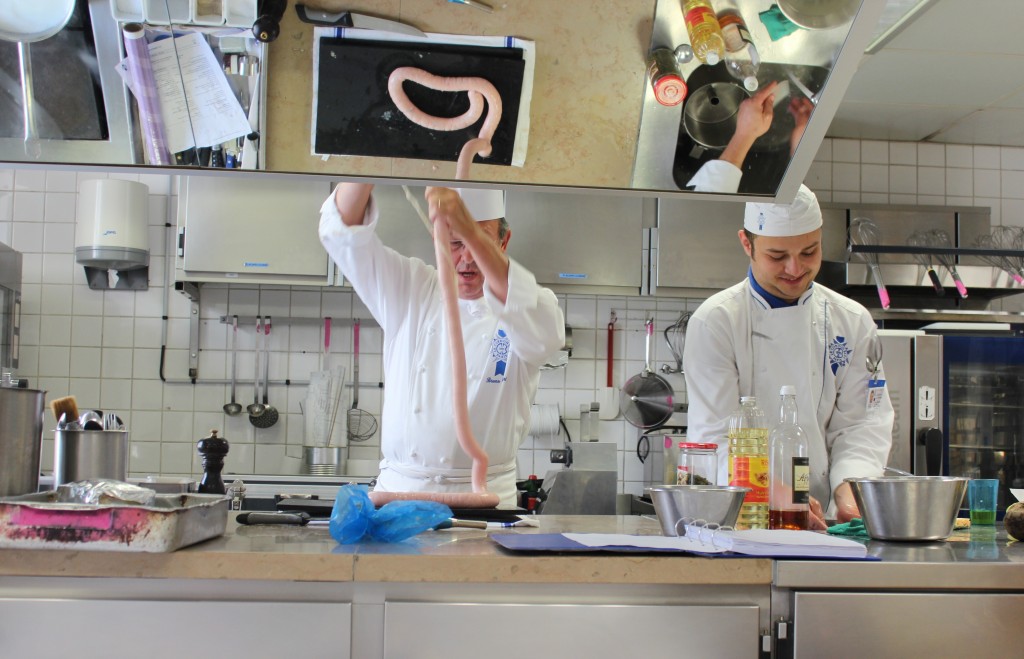
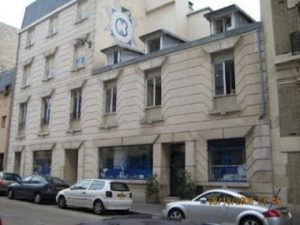
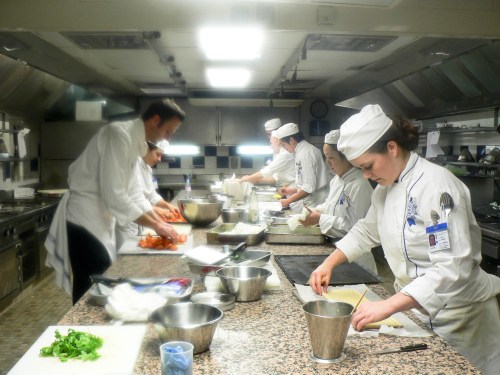
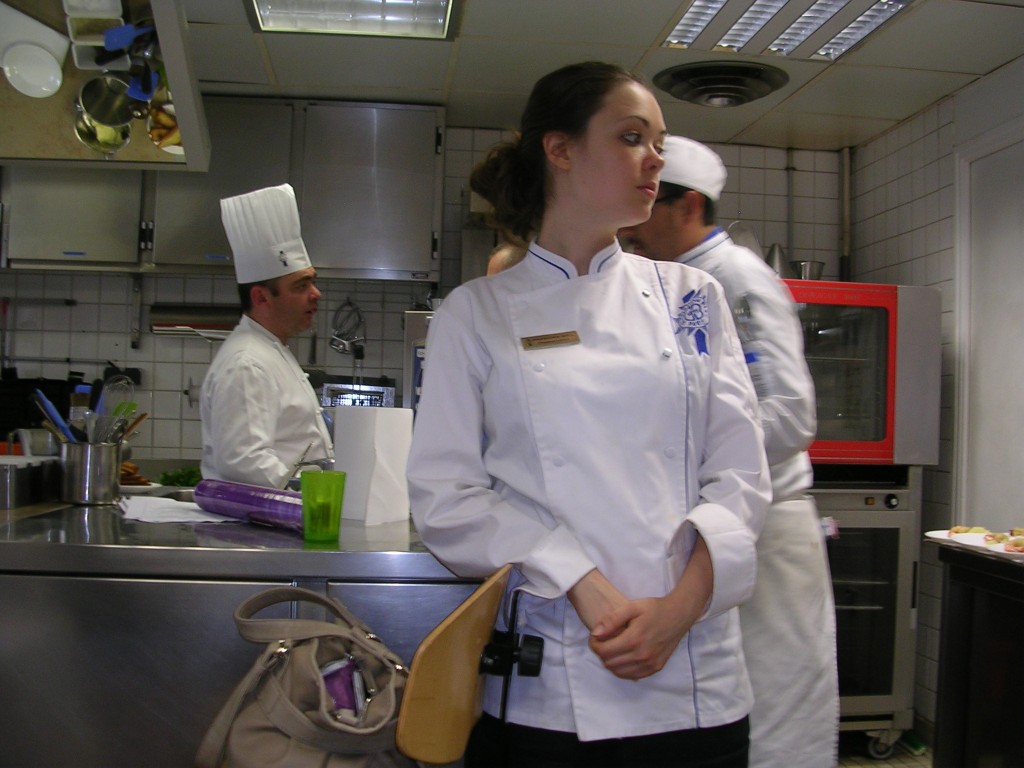
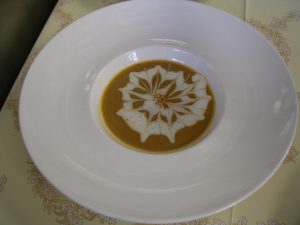
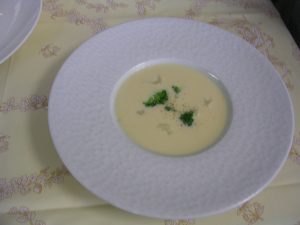
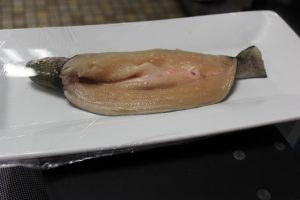
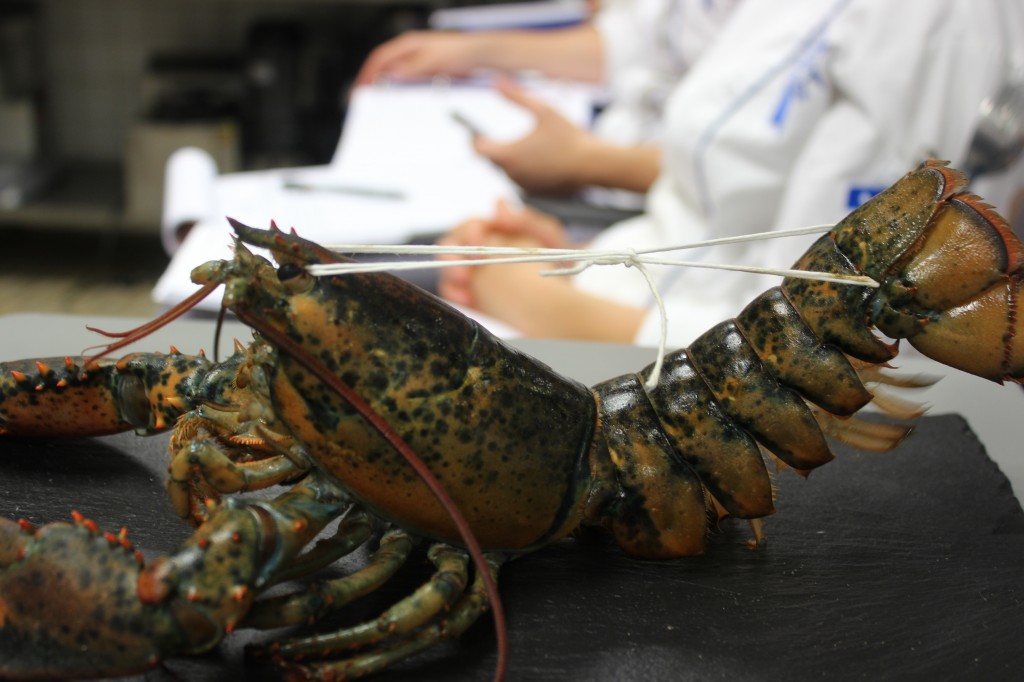
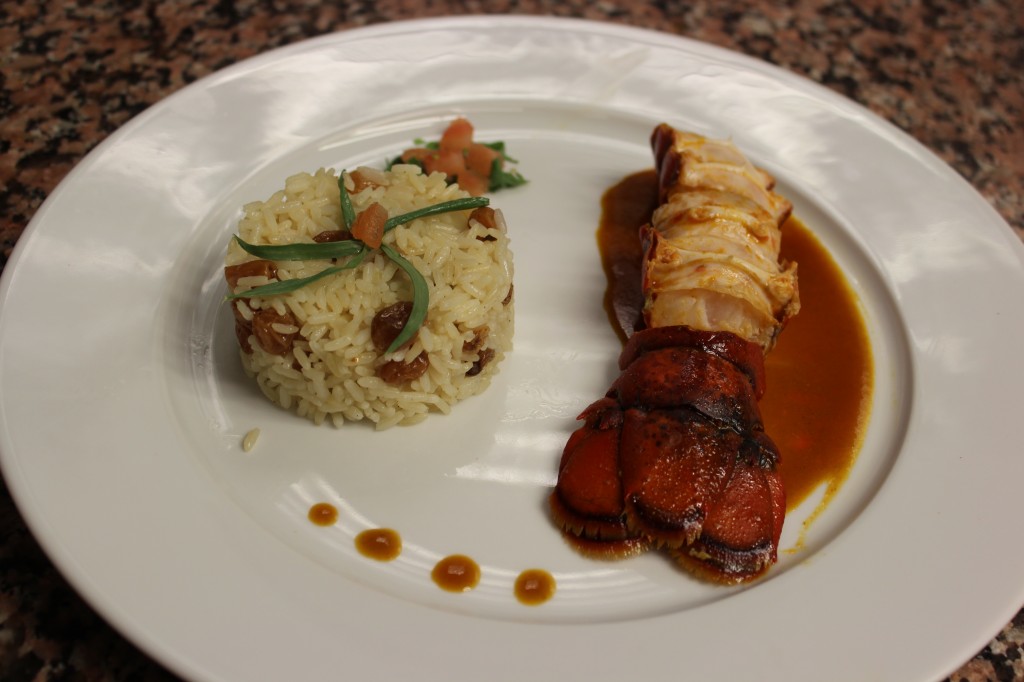
![pate-brisee-9[1]](https://www.gdaysouffle.com/wp-content/uploads/2013/06/pate-brisee-91.jpg)
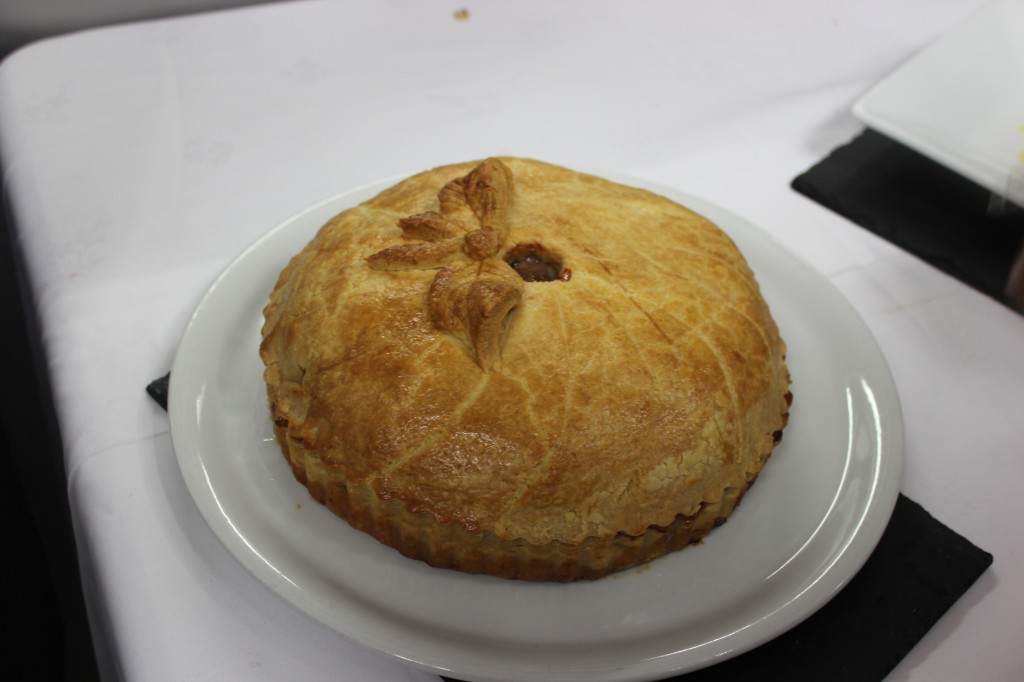
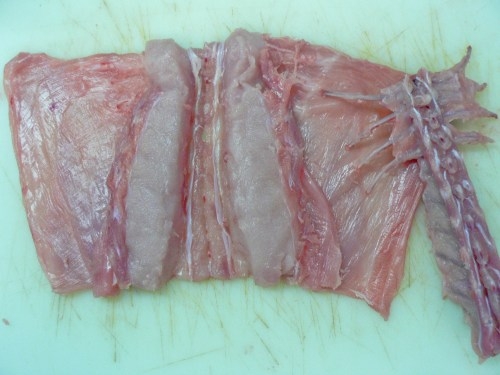
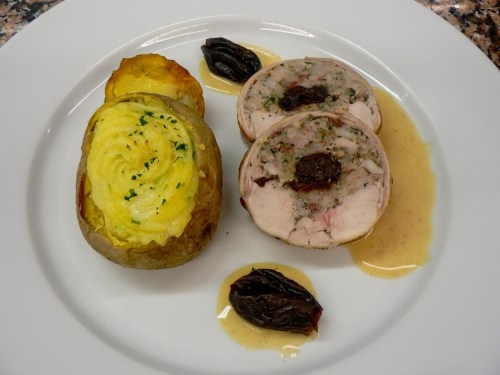
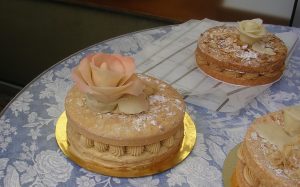
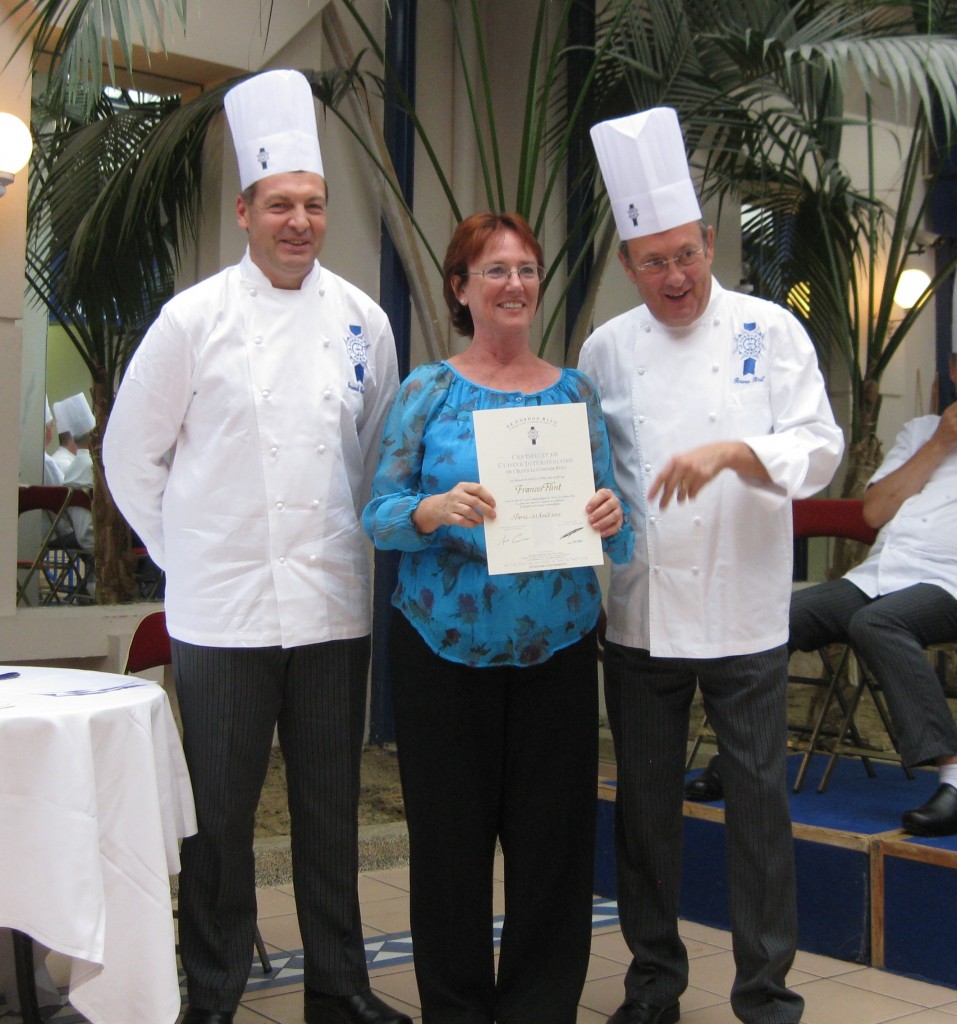

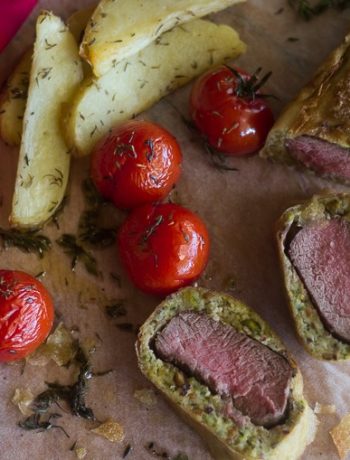
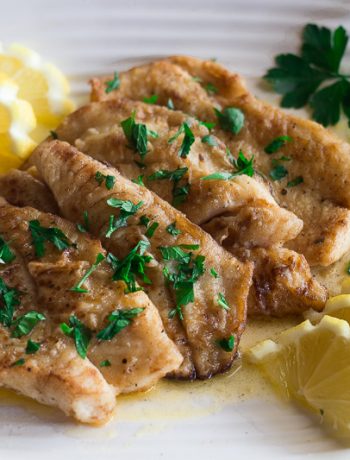
39 Comments
Renee
June 9, 2013 at 9:41 amWell done fran! All of that food looks amazing and difficult to cook 🙂
Fran
June 10, 2013 at 8:32 pmThanks Renee, now I’ll have to rest up for next year when I do the Superior course!
Gourmetgetaways
June 9, 2013 at 12:18 pmWhat a prestigious place to attend! I am so jealous, the experience is awe inspiring and the dishes looked lush!
Jess
June 9, 2013 at 12:31 pmOmg, this sounds AMAZING!! I know what I want for my 30th birthday now… An all expenses paid trip to Paris to learn to cook!
Thanks for posting 🙂
Fran
June 10, 2013 at 8:29 pmYes, that would be great. Sigh, I’ll never see age 30 again!
Lorraine @ Not Quite Nigella
June 9, 2013 at 9:03 pmThis was fascinating to learn! And yes it makes me want to go there and learn how to debone a rabbit (great job you did!).
Fran
June 11, 2013 at 2:31 pmDeboning a rabbit was alright but I didn’t particularly like placing a live lobster into a pot of boiling water!
Rachel @ sweetravioli
June 9, 2013 at 10:47 pmSo very interesting! I can’t imagine working in that tiny kitchen, seems claustrophic! What was the reason behind pushing the pastry dough like that?
Fran
June 10, 2013 at 8:28 pmYes, the kitchen space to work is small, but there is a bit more space to work where the stoves are. After the dough is formed into a ball, it is pushed along the marble benchtop to give it more cohesion- sort of like kneading.
Maureen | Orgasmic Chef
June 10, 2013 at 9:45 pmIt all sounds so posh and elegant and I want to do it!
Fran
June 11, 2013 at 2:32 pmMaureen, if you can spare 10 -11 weeks of your time, come over to Paris and do it!
Anneli (Delicieux)
June 11, 2013 at 3:04 amHow wonderful! I would just love it there! That filleted rabbit looks amazing. Well done you 🙂
Fran
June 11, 2013 at 2:34 pmI usually don’t like rabbit too much, but with the prune stuffing. it was quite good.
Claire @ Simply Sweet Justice
June 12, 2013 at 2:35 pmWow, you must have been reading my mind! I am thinking about visiting Paris next year and would love to take cooking classes there, especially at Cordon Bleu!
Fran
June 14, 2013 at 9:17 amYes Claire, you should come! They have one-day short courses there, including macaron-making.
Hester @ Alchemy in the Kitchen
June 13, 2013 at 3:39 amHi Fran, that sounds like an amazing experience. How wonderful. I saw the school on a cookery programme – I think Mary Berry revisited it – and boy is it tiny! But just think, the amazing cooking per square inch of floor space that that place must have produced over the years…
Fran
June 14, 2013 at 9:26 amThat’s interesting- I ahd never heard of Mary Berry before and just looked up her visit to LCB on the internet. During her visit, she said she thought the school was a lot larger than when she attended the previous premises in Paris in 1960. Imagine how much smaller the old building was!
Juliana
June 13, 2013 at 7:27 amWow Fran, what an amazing experience…I love the pictures…everything looks fantastic.
Thanks for the post…hope you are having a fun week 😀
john@kitchenriffs
June 13, 2013 at 9:21 amWhat a fantastic experience! It’d be so much fun to do this – maybe someday! Good to hear they have a translator, as my French is horrible! Really fun post – thanks.
Fran
June 14, 2013 at 9:29 amJohn, most of the full-time chefs there speak English during the practical classes, but sometimes you get a part-time chef who doesn’t speak any English. I like that, because then I get to practice my French!
Nami | Just One Cookbook
June 14, 2013 at 8:02 amHi Fran! Wow, you are living food bloggers dream! I wish I had some real training in the kitchen. At least some basic things and knowledge about all kinds of food. I was very fascinated to read your post. Good luck with the next course!
Fran
June 16, 2013 at 7:50 pmNami, with the dishes that you prepare, it looks like you already have had lots of real kitchen training!
Sandra | Sandra's Easy Cooking
June 14, 2013 at 9:52 pmSounds like a great experience overall! Food looks amazing, and your 101 about the school will probably help other generation of students. Wonderful post, Fran! Have a lovely weekend ahead!
Jo
August 2, 2013 at 3:51 amHi Fran,
Your cooking looks amazing and I’m so envious and inspired. I would really like to attend LCB for the professional cooking courses and your post really answers a lot of my questions. But would you mind giving me an idea of a typical week’s schedule as it is not clear from their website? I heard stories of very long days but that could be the fast track course offered in London which is different. I want to see if I have the stamina to finish the course. Thanks so much!
All the best,
Jo
YenYu
April 24, 2014 at 12:04 amHI
I am going to study the pastry course for 3 month in Le Cordon Bleu Paris, which will be started at 1st September 2014.
Could you give me some suggestions about the accommodation? ex. how can I find the room with reasonable rent and quality.
Best Regards
Yen-Yu
Judy
June 28, 2014 at 5:47 amWow Fran, I just found this website! Your living my dream! I just finished applying to attend LCB! The only question I have is you have to find your own apartment correct?
Fran
June 28, 2014 at 3:03 pmThanks Judy. Yes, you have to find your own accommodation, but I believe the LCB office may have some information about private individuals who are willing to rent you a room or an apartment. The school also gives you an information sheet on various websites where you can find rental accommodation. I found my apartment through http://www.paristay.com.fr. It’s, of course, best to secure your accommodation before you arrive in Paris. Good luck!
Fernando
August 6, 2014 at 3:27 amThis is really great , I want to go and study there next year but what are the schedules of the classes you were in ? I mean I have been told that the schedule is given the day before starting the classes or something like that. I would like to know beacause I want to study there while working…and I would like to know if there is any time available for working.????
Fran
August 6, 2014 at 3:46 pmFernando, if you are studying just the cuisine course, you typically have 3 demonstrations and 3 practical classes each week (2.5 hours each). You are given your entire schedule at the beginning of the course, so you know what it will be in advance. The class schedule varies from week to week- for example, you may have Tuesday off one week and then no days off the following week and sometimes you have classes on Saturdays. So, you could work a little while you’re studying, but your job would have to allow you to have flexible hours. I don’t know of anyone at the LCB school who works while studying, but I suppose it could be done. However, if you’re doing both the Pastry and Cuisine courses at the same time, it would be impossible to work- the hours are too demanding. Good luck!
Natasha
August 27, 2015 at 12:50 amI am thinking of starting the pastry program in November – I am very confused and have a lot of questions – could I email you or contact you?
Fran
August 27, 2015 at 8:25 amThanks Natasha, I just sent you an email- feel free to ask any questions and I’ll reply directly to you.
Ankita
March 10, 2016 at 5:02 amHi,
Thank you for such an amazing blog. It was really helpful. I am a planning to do the diploma de patisserie from le cordon Bleu paris and have a couple of questions. It will be really helpful if I could email you the same. Please let me know how to get in touch.
Regards
Ankita
Fran
March 10, 2016 at 7:50 amThank you, Ankita. I just sent you an email on how to contact me for further questions about the LCB school- I’ll be happy to answer your questions.
Parul Bhardwaj
June 6, 2016 at 7:45 pmHi Fran,
I am going to join the school for March 2017 Pastry diploma. As paris is a costly city, can you please help me with the rent you paid and also do students work part time to earn their living or do any internships along with the course?.
Can i try for part times so as to earn? and is learning french a must if i wish to work there?
Thanks and Regards,
Parul
Fran
June 7, 2016 at 12:41 pmParul,
Thanks for stopping by my blog. Yes, Paris apartments are rather expensive- I paid € 1,950 per month for my 1-bedroom apartment, but you can find cheaper ones, particularly if you share with someone. I found my apartment through the website http://www.paristay.com. The LCB school will also send you a list of websites and services that can help you find an apartment.
In order to work part-time while you are studying, you need to have a work permit, unless you are already a resident of the European Union. I think it would be a bit difficult to work while you are studying because your schedule changes from week to week. Internships are offered after you finish the Pastry Diploma, not during your course. All classes are conducted in French with an interpreter, so while French is not necessary, I’d recommend learning a little before you go to Paris. On the other hand, I believe that you have to be able to speak French fairly well in order to be accepted into an internship and also to be able to work in France- you need to be able to understand what people are saying to you while working in a kitchen.
Good luck in your studies. It sounds like the new LCB campus is going to be quite an improvement over the old campus!
Kimmy
July 10, 2016 at 7:27 pmHello! I am so glad that I stumbled upon this blog. Recently, I have started taking baking classes with a chef who had graduated from Cordon Bleu Paris. And now that I will be visiting Paris, I am going to take a one-day class at Cordon Bleu this month but I realized that I am not able to leave my suitcase at my AirBnB before the class begins, so I will have to take it with me. Do you know if there is a room where participating students can leave their belongings during the class? (I hope they do – and I just hope that I won’t be kicked out of the building because of the suitcase…)
Fran
July 10, 2016 at 9:50 pmHi Kimmy, I think the best thing to do is to call the LCB school and ask if you can leave your belongings somewhere at the school while you take the class. I don’t know if they have a special room for belongings, but they might let you leave your suitcase at the reception desk while you take the class. Good luck!
Mariza Wessels
July 23, 2017 at 7:39 pmI am a South Africa who is so inspired by the way you make your pastry. You have taught me so much and I have printed evething out from that lesson and your recipe in connection with the quiche Lorraine. I would like to know if it is possible to freeze the quiche for a week or 2. We have got a special occasion where I would need to prepare some of the quiches in advance. Your comment please? (mariza.w@iafrica.com) Thanks, Mariza Wessels.
Fran
July 24, 2017 at 5:32 amMariza, thank you for your comment. You could freeze the quiches for probably up to one month in advance. Certainly they could be frozen for a week or two and still taste fresh. I hope you enjoy making the Quiche Lorraine!